LabGuy's World: Broken 1DP1 Cathode Ray Tube
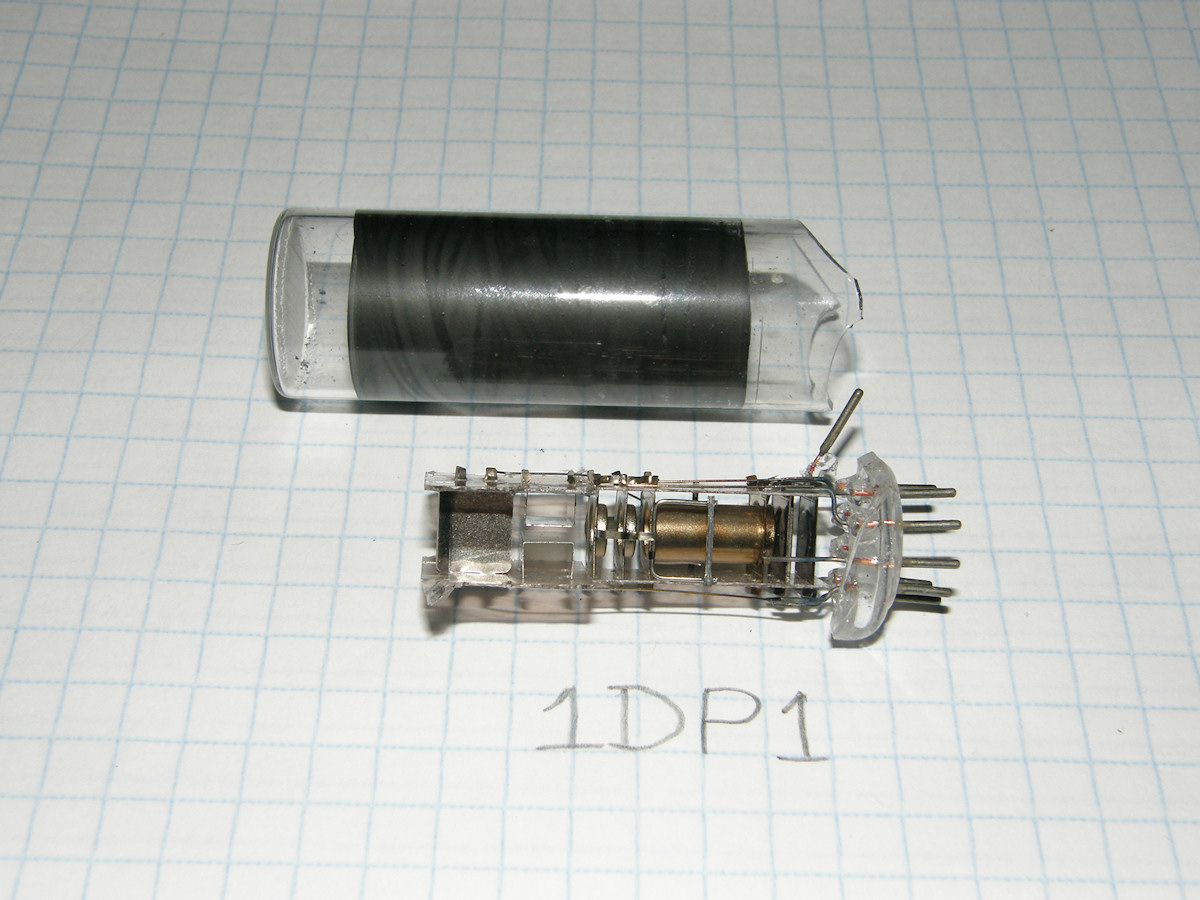
I guess I don't know my own strength! - 20141213 I used to have a little tube. But, he don't glow no more! Don't worry. I have three more of these. I thought the tube would fit a 13 pin socket made for a nixie tube. It had nine radial pin positions as well as four more in the center of those. Sorry no photo of that handy. As you can plainly see, the tube split rather cleanly at the base. What a tiny electron gun! This CRT is the size of typical compact radio tube! Three quaters of inch in diameter and about two inches long. Shown on 1/4 inch grid paper for scale. 

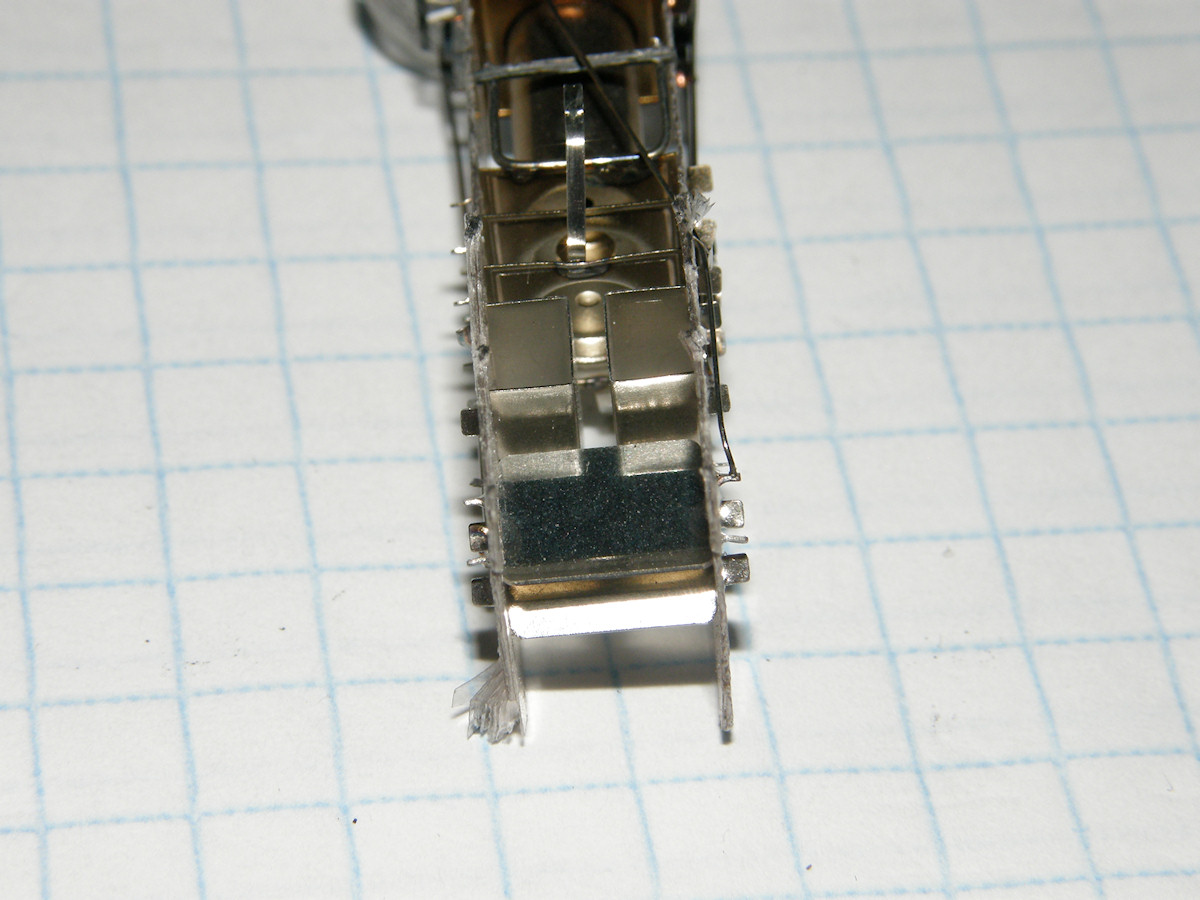
Turning a sad thing into an educational opportunity! - 20141213 The structure is built from stainelss steel supported by mica sheets. Mica is a natural mineral that is impervious to the high temperatures inside a vacuum tube as well as being a natural insulator. All of the metal elements are spot welded. A unique quality of the 1DP1, as compared to the other tiny ESCRTs, is that all four deflection plates are routed out to separate pins. This is not the case in the RCA 913 or the 1CP1. Some internal electrodes have to share pins. In all three of these tubes, the cathode shares a pin with one side of the heater filament. 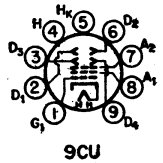
Pin out of the 1DP1 CRT - 20141213 When completed the gun would be meticulously cleaned before installing in the glass envelope. This is to ensure no contaminants would leak gases once the tube is sealed and pumped down. The last two photos are detailed looks at the deflection plates. Shown on 1/4 inch grid paper for scale. 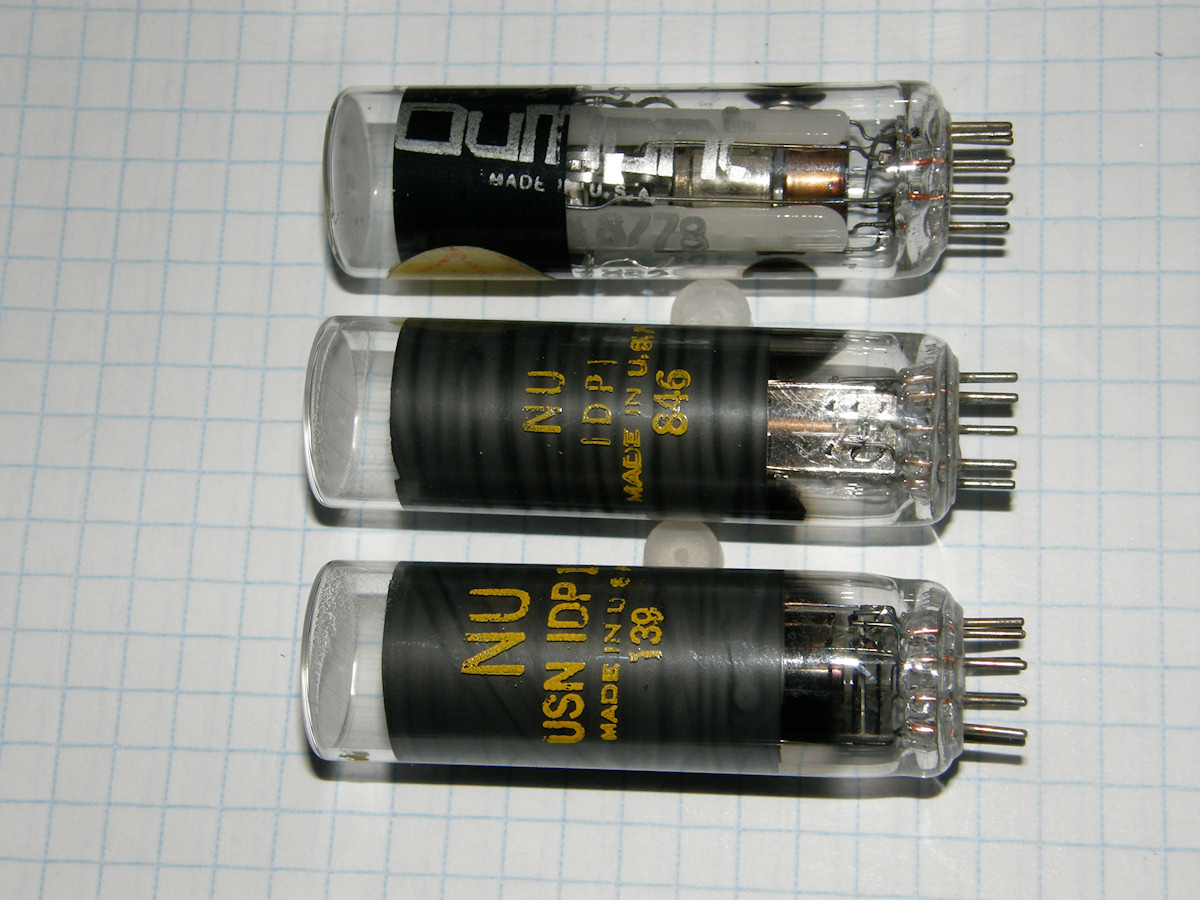

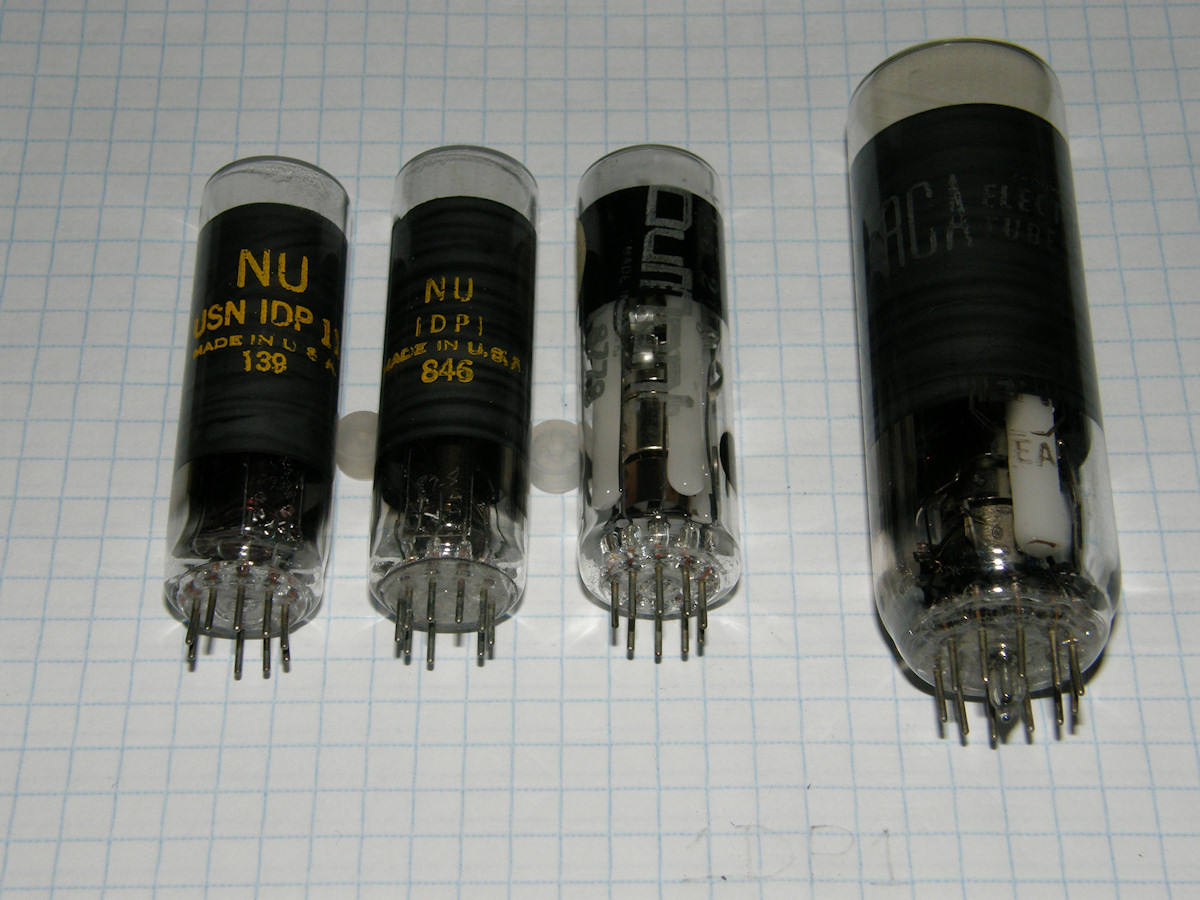
One 1EP1, one 1DP11 and two 1DP1 CRTs - 20141213 I show a 1EP1, 1.25 inch CRT, for size comparison. The 1DP1 is the tiny size winner. In the collection are two National Union branded three quarter inch CRTs. A 1DP1 with green phoshor and a 1DP11 with blue phosphor. There is also the extremely rare DuMont 1DP1. Visually, it is of obviously higher quality the the National Union tubes. DuMont was the developer of the first long lived cathode ray tubes. The earliest CRTs had a gun life of about one day! Allen B. DuMont solved that problem and made the cathode ray tube practical in the late 1930s. We owe a lot to the genius of this fellow. Before DuMont made the CRT a practical reality, television experimenters used Braun Tubes. Inventend by Karl Ferdinand Braun in 1897. Braun's tube did not have a heated thermionic cathode. Instead, it used an electro-spike cathode. This is a hair fine wire, or bundle of wires, that has been chemically etched to an ultr-fine point at one end. Typically only a few atoms wide! Electrons will bunch up as they are driven to the end of the spike and finally fly off at high speed. These electrons are now accelerated and focused by the anodes of the electron gun or externally applied magnetic fields. The Braun tube was operated at over 100,00 volts via a Ruhmkorff coil or other similar high voltage source. The extremely high voltages tended to erode the cathode spike very rapidly. The temperature at the point could be thousands of degrees. Hence the short operating life of Braun tubes. The iconoscope tubes used at the 1939 Berlin Olympics television broadcasts used Braun tube electron guns. Each night, the tubes were rebuilt and re-installed in the cameras next morning. A CRT project constructed around the 1DP1 and the 913 are both on the drawing board. Coming to a Labguy's World near you. Stay tuned! REFERENCES:
1. The National Union 1DP1 datasheet. [HOME] [ELECTRONICS PROJECTS] Created: December 13, 2014 Last updated: May 26, 2015 |